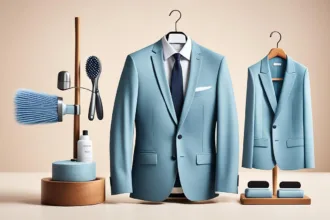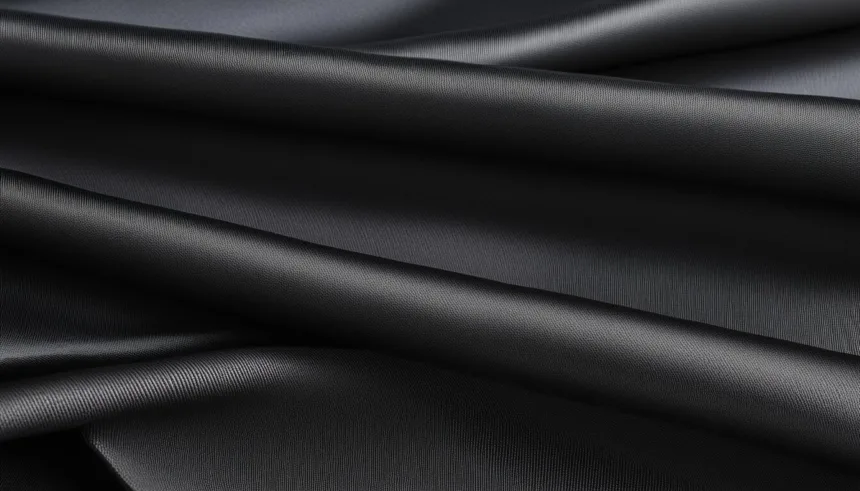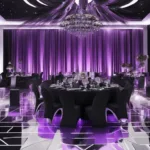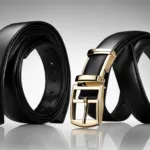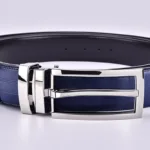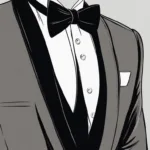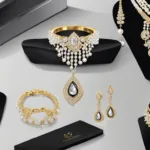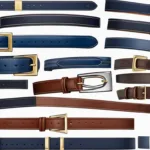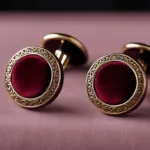When it comes to black tie events, the suit is the cornerstone of classic male elegance. While attention often gravitates towards the ostensible accessories like the shirt and bow tie, the true foundation of a dapper appearance lies in the choice of fabric for your suit. This black tie suit fabric guide will navigate you through the nuances of selecting high-quality materials that encapsulate traditional finesse and modern sophistication. Making informed material choices for formal suits not only dictates the aesthetic appeal but also the overall comfort and longevity of your attire. From the timeless radiance of velvet to the subtle shimmer of mohair and silk, choosing fabrics for black tie suits is a refined art that enhances the wearer’s presence and distinguishes their style.
Whether at a gala, wedding, or any formal gathering, your ensemble speaks volumes before you do. Decisions between velvet’s deep theatricality or barathea’s understated grace are not mere afterthoughts—they are imperatives in crafting the perfect black tie ensemble. With an array of textiles at your disposal, understanding their individual characteristics can lead to a tuxedo that is not just a suit, but a statement.
Key Takeaways
- Understanding fabric quality is key to achieving sophistication in black tie attire.
- Traditional black and midnight blue fabrics offer an elegant and timeless look.
- Velvet and barathea exhibit a rich interaction with light, adding depth to your suit.
- Fabric choice plays a crucial role in suit comfort and durability.
- Personal preferences in texture and drape come into play when choosing fabrics for black tie suits.
The Importance of Fabric Choice in Black Tie Attire
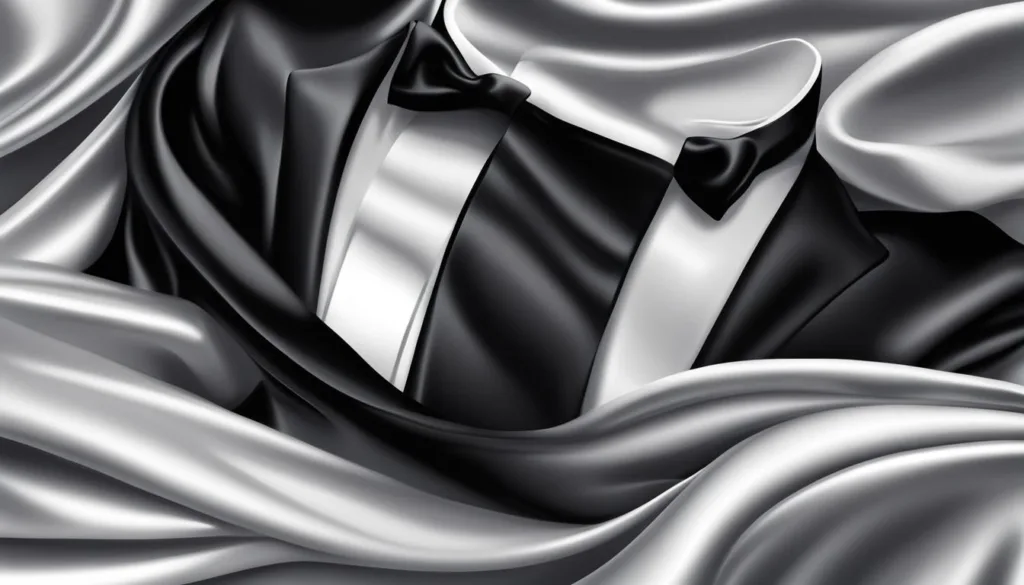
When it comes to black tie occasions, the sartorial spotlight often shines on the cut and fit of a gentleman’s tuxedo. However, the silent envoy of elegance lies within the threads of fabric woven into the design. The choice of material possesses the power to command attention, articulating sophistication through its texture and sheen while providing the wearer with both comfort and style. The judicious selection of fabric is paramount, for it is the fabric that shapes the garment’s personality, creates its signature silhouette, and defines its place within the pantheon of formal wear.
Why Material Matters for Suit Elegance
The quest for impeccable fabric quality in tuxedo design is not merely about aesthetic indulgence; it is about honoring tradition while embracing modernity. Materials such as silk and mohair have long been the stalwarts of tuxedo fabric, each bestowed with its own characteristic luster and texture. Silk, with its natural sheen, has been a staple in dinner jacket facings and is embraced in cream summer jackets for its sublime gleam.
Impact of Fabric on Comfort and Style
Beyond the visual magnificence, fabric selection significantly influences the comfort level of the attire. Options such as barathea and velvet reign supreme in balancing comfort and style in fabrics. Barathea’s dense weave not only ensures a graceful drape but affords a matte finish that appears infinitely more sophisticated than other textiles. Meanwhile, the plush touch of velvet provides a sartorial hug, wrapping the wearer in luxury without forfeiting the garment’s crisply tailored architecture.
“Durable fabrics for black tie do not merely survive the night; they outlast trends, forging legacy with every thread.” – Timeless Elegance, Sartorial Journal
| Fabric | Luster | Texture | Comfort Level | Style Notes |
|---|---|---|---|---|
| Silk | High gleam | Smooth | Light and airy | Reserved for jacket facings and summer wear |
| Mohair | Sharp shine | Crisp | Breathable, yet structured | Often blended with wool for tailored luster |
| Barathea | Matte | Dense weave | Supremely comfortable; regal drape | The quintessential black tie fabric with depth |
| Velvet | Subtle sheen | Soft plush | Luxuriously comfy | Avant-garde when used in full attire |
Given the gravity of its role, the fabric becomes an essential cog in the machinery of formal fashion; a cog that should never be underestimated nor chosen with haste. For the discerning individual, seeking out the finest fabrics is not just a part of dressing, but a testament to one’s reverence for the grandeur of black tie events.
Understanding the Traditional Black Tie Palette
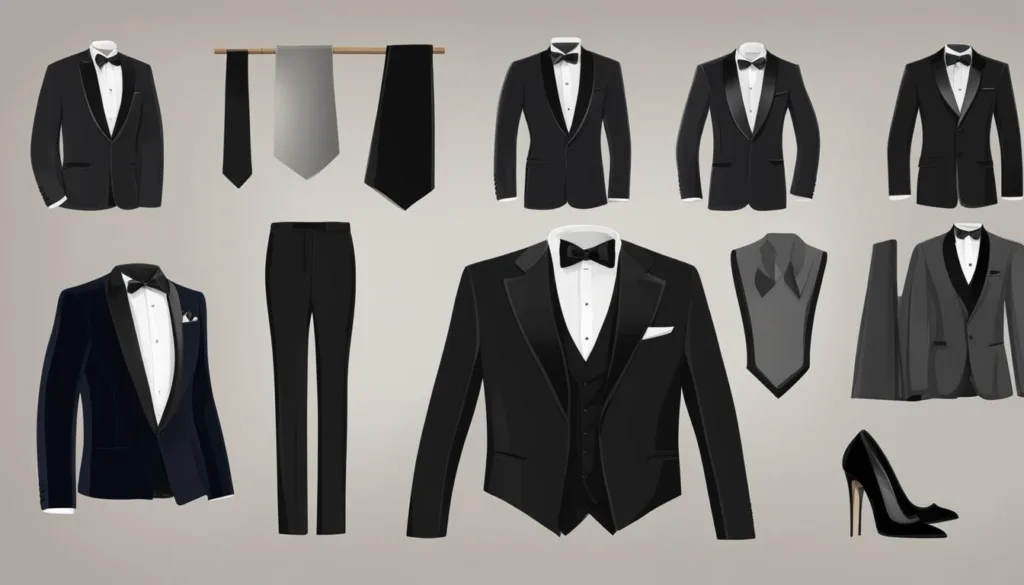
When articulating the aesthetics of black tie attire, discerning gentlemen recognize the significant role fabric selection plays in this sartorial art. The classic black tie palette is a homage to timeless elegance, prioritizing dark tones for their sophisticated presence and the gravitas they lend to formal events. A thorough black tie suit fabric guide emphasizes the importance of high-quality, dark, solid materials in encapsulating the essence of traditional formal wear.
Midnight blue has earned its place as a beloved alternative to standard black, revered for its unique property of appearing even darker than black in certain lighting conditions. This phenomenon makes midnight blue the quintessential choice for those looking to add a subtle layer of complexity to their evening ensemble without straying from the sanctified territory of classical taste and styling.
- Historical affinity for dark hues – Black and Midnight blue
- Consistency in the absence of patterns to maintain elegance
- Fabric texture and luster as central elements for interaction with light
In choosing fabrics for black tie suits, it’s not only about selecting the right color but also about how a fabric can stand under artificial light and what message it conveys in formality. The ultimate consideration is how these elements harmonize to present a look that is both commanding in its simplicity and distinguished by its craftsmanship.
| Color | Description | Occasion |
|---|---|---|
| Black | The quintessential color for formal events, symbolizing elegance and authority | Standard black tie events, galas, and prestigious ceremonies |
| Midnight Blue | Appears richer than black under artificial light, adding a layer of nuanced sophistication | A tasteful deviation for traditionalists looking to subtly stand out |
The essential point for adherents to classic standards remains clear: opt for fabrics that champion the black tie’s regal heritage through their rich, dark appeal and impeccable texture.
Wool and Silk Suit Fabrics: A Timeless Combination
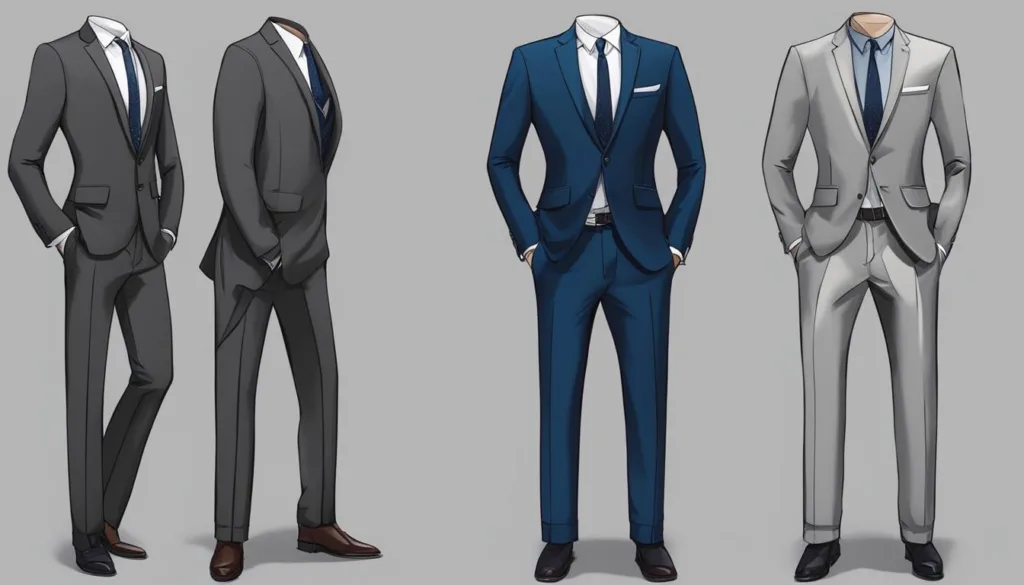
In the refined world of black tie attire, the collaboration of wool and silk suit fabrics sets a standard for timeless style and sophistication. These fabric choices underscore a commitment to both tradition and innovative suit fabric trends, offering a personalized approach to formalwear that resonates with modern sensibilities.
Mohair’s Role in Adding Sharpness and Shine
Mohair, a luminous fabric known for its luster and resilience, is a favored choice among tuxedo connoisseurs. Its capacity to reflect light introduces a distinctive sharpness to the garment while permitting a level of shine that pivots effortlessly from classic elegance to contemporary flair. When woven with wool, mohair affords the wearer the best of both worlds—unrivaled sophistication imbued with a sense of the individual.
Choosing Between Wool and Silk Blends for Different Seasons
A discerning dresser must consider the seasonal context of their wardrobe choices. During summer’s zenith, silk remains a revered option for its breathable qualities and sumptuous texture. Conversely, the cool promise of autumn and winter beckons the soulful warmth of wool. Blended fabrics emerge as a solution, bridging the gap between thermal comfort and aesthetic allure, irrespective of the thermometer’s verdict.
The table below highlights the key characteristics of wool and silk blends across various seasons, presenting a concise guide for selecting the perfect tuxedo fabric:
| Season | Wool | Silk | Wool-Silk Blend |
|---|---|---|---|
| Spring/Summer | Lightweight, breathable | Smooth, airy, elegant sheen | Combines lightness with a subtle gleam |
| Autumn/Winter | Heavier, insulating | Rich texture, luxurious warmth | Optimal warmth with enhanced texture |
| All Seasons | Versatile, durable | Lustrous, refined | Ideal for year-round formal events |
In conclusion, whether one gravitates towards the spark of silk or the groundedness of wool, or finds solace in their hybrid, the interplay of these fabrics in suit design remains a testament to the enduring legacy and evolving future of formal menswear.
The Role of Weave: Barathea and Its Alternatives
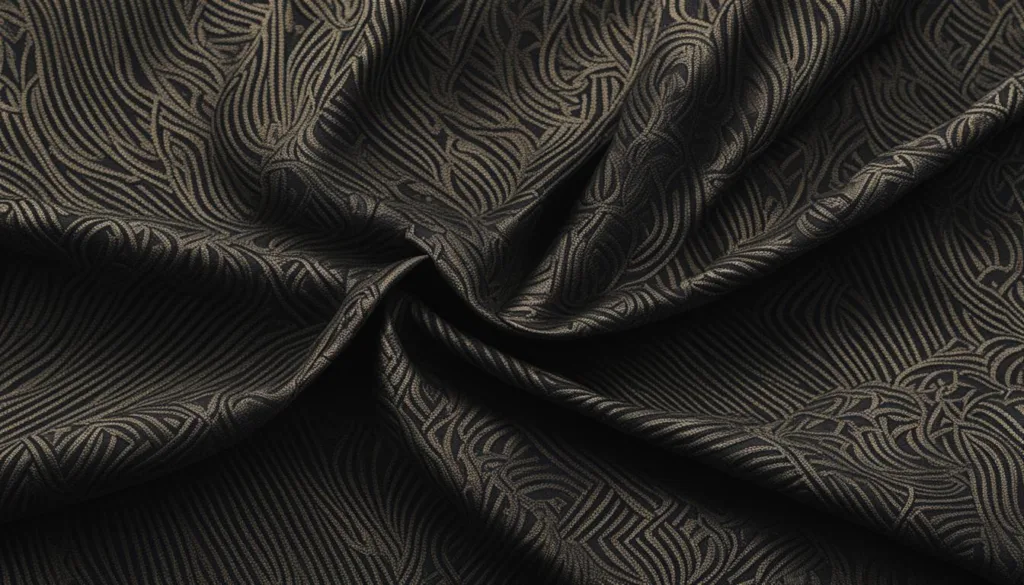
When it comes to textile selection for black tie attire, the weave of the fabric plays a crucial role. Barathea, a member of the satin weave family, is particularly esteemed for its ability to produce a graceful drape—a fundamental characteristic of sophisticated black tie ensembles. With an ability to absorb light rather than reflect it, barathea’s matte finish contributes to a depth of color that other black fabrics may lack, often appearing more like dusty grey under certain lighting conditions.
The unique qualities of barathea make it a fabric that stands out in the realm of innovative suit fabric trends. Yet, it’s important not to generalize all textured weaves as barathea, as there is a range of weaves that each convey a different aesthetic and tactile experience. To provide a clear understanding of barathea and its alternatives, here is a comparison of commonly used weaves for black tie attire:
| Weave Type | Characteristics | Textile Quality | Common Usage |
|---|---|---|---|
| Barathea | Dense construction, matte finish, excellent drape quality | Luxurious, deep color absorption, minimizes light reflection | Tuxedos and formal jackets |
| Herringbone | V-shaped weaving pattern, subtle texture | Sophisticated, often woolen, good sheen | Formal suits and trousers |
| Twill | Diagonal rib pattern, durable | Less formal, versatile sheen | Less formal black tie events, jackets |
| Velvet | Soft, short pile, luxurious tactile feel | Rich luster and sheen, heavyweight | Dinner jackets, winter black tie events |
| Satin | Smooth surface, glossy finish | Highly reflective, elegant sheen | Lapels and striping on trousers |
The selection between these weaves depends on the desired effect and the specific event. For instance, barathea is ideal for those seeking a timeless, elegant look, whereas velvet may be chosen for a more opulent statement.
As fashion evolves, so do the weaves that are chosen for black tie attire. Designers continue to innovate, developing new fabrics and revisiting traditional ones, ensuring that men’s formal wear remains both classic and contemporary. Therefore, understanding the unique benefits and aesthetics offered by different types of weaves such as barathea and its alternatives is essential in curating a wardrobe that resonates with individual style while adhering to black tie standards.
Opting for Velvet: The Opulent Fabric Choice
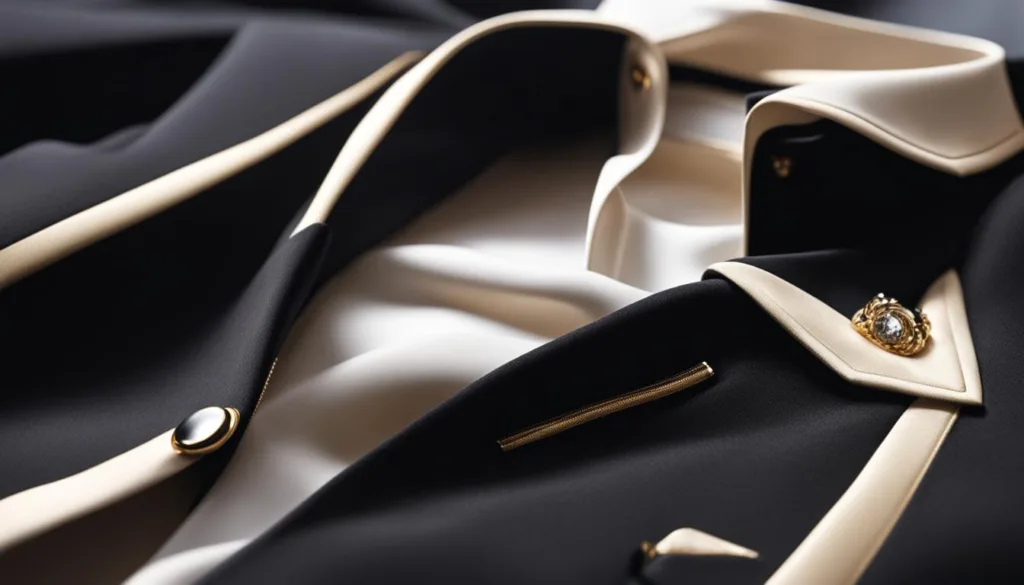
Velvet holds a special place in the realm of formal suits, representing a unique juxtaposition of luxury and versatility. This illustrious material has been at the helm of tuxedo design for ages, with black velvet tuxedos offering a striking balance that resonates with both traditional and contemporary tastes. The lush texture and sheen inherent in velvet tuxedos can amplify an individual’s style, ensuring they stand apart at formal events with a touch of subtle extravagance.
When to Choose Velvet for Your Tuxedo
Deciding whether to integrate velvet into your formal wardrobe largely depends on the nature of the event and personal aesthetic preferences. Velvet is often the fabric of choice when dressing for gala events, winter formal occasions, or any event where a sense of grandeur is coveted. While it’s traditionally selected for cooler temperatures due to its dense pile, innovation in fabric blends now allows velvet to maintain its regal stance across seasons.
Cotton vs. Silk Velvet: Weighing the Differences
The age-old debate between cotton and silk velvet often leaves many pondering which material best suits their formal attire. Silk velvet, renowned for its exquisite depth and lustrous surface, is a pinnacle of sophistication. Historically revered, it contributes an additional layer of luxury to black tie ensembles. Cotton velvet, on the other hand, offers durability and a matte elegance that can be more forgiving than its silk counterpart. Both highlight the rich tactile experience characteristic of velvet, making them essential material choices for formal suits.
While silk velvet is a rarer find, its allure continues to captivate those with discerning tastes. It remains an aspirational fabric reminiscent of regality and high fashion. Cotton velvet provides a more accessible option that retains much of velvet’s esteemed quality, becoming a wise choice for those looking to blend opulence with practicality.
With the resurgence of the wool and silk suit fabrics trend, velvet’s place in the hierarchy of luxury suit materials is unshaken. It serves as a testament to timeless elegance, ensuring that those who wear it are clad in a fabric that speaks volumes of their impeccable fashion sense and their respect for the solemnity of formal occasions.
Weight Matters: Balancing Heaviness and Drape
When it comes to black tie events, the quest for durable fabrics that manage to be simultaneously substantial and supple is unending. The inherent quality of a fabric plays a pivotal role in not just its longevity but also how it graces the wearer. In the realm of tuxedo design, a certain elegance is sought, which is often dictated by the fabric’s weight.
Historically, dinner jackets showcased fabrics that were chosen for their ability to maintain formality in cooler settings, inadvertently offering a more structured silhouette thanks to their heavier weight. Fast forward to today, and the scenario has vastly evolved with fabrics needing to be adaptable to varied environments without giving in to creases or discomfort.
The weight of the fabric isn’t just a number; it’s a storyteller of the suit’s journey through the night. It conveys the practicality needed in modern, sometimes unpredictable, thermal contexts of black tie affairs, yet it doesn’t neglect the timeless demand for a poised presentation. Fabric weights for tuxedos, therefore, aren’t arbitrary numbers but a thought-out balance, harmonizing the robustness required for durable fabrics for black tie engagements with the grace of a well-draped garment.
| Fabric Type | Weight Range (gsm) | Preferred Setting | Drape Quality |
|---|---|---|---|
| Traditional Heavy Wool | 350-500 | Cool climates/Indoor venues | Structured, classic drape |
| Modern Lightweight Blend | 250-350 | Warmer climates/Outdoor venues | Fluid, relaxed drape |
| Barathea Wool | 300-450 | Versatile, all-round use | Elegant, refined drape |
The table highlights a general guideline for weights that cater to various settings. Fabrics lighter than 300gsm, while tempting for their breeziness, may not offer the draping necessary for a formal garment, potentially compromising silhouette and formality. On the other end of the spectrum, we find heavier wools that communicate richness and durability, yet they are anything but overbearing.
Ultimately, selecting a fabric for a sophisticated tuxedo is not just about the fabric quality in tuxedo design, but about understanding the fine line between a cloth that exudes durability and one that ensures a garment falls beautifully and effortlessly, enhancing the body’s natural lines and movement.
Black Tie Suit Fabric Guide: Selecting the Best Materials
When the affair is formal, the details matter, with the selection of the right fabric for your tuxedo being paramount. The dark and luxurious spectrum of colors available for black tie suits permits a nuanced expression of style while maintaining a classic look. Whether it’s a gala or a sophisticated evening wedding, the quality and type of material chosen for your ensemble can profoundly impact its overall elegance and visual appeal.
The Dark and Luxurious Spectrum
Sartorial tradition prescribes black and midnight blue as the gold standard for black tie attire. These shades are not only rooted in a rich history of elegance, they’re also chosen for their ability to maintain a distinguished presence under varying lighting scenarios. The deep, inky hues available within this dark palette contribute significantly to the suit’s luxurious appeal.
Deciding the Degree of Luster and Sheen
Each fabric carries with it a distinct interplay with light, which can render dramatically different effects on your tuxedo’s appearance. Mohair, known for a naturally shiny appearance, can catch the light for a subtle sparkle, whereas other options like barathea provide a deep, understated matte finish that may be preferred in many formal settings.
| Fabric Type | Visual Texture | Luster | Weight (gsm) |
|---|---|---|---|
| Mohair | Crisp and textured | High sheen | 200-300 |
| Barathea | Smooth with subtle grain | Matte | 300-400 |
| Velvet | Deep and plush | Variable sheen | 200-400 |
| Silk | Slick and smooth | Satin finish | 100-250 |
| Wool/Silk Blend | Varied texture based on weave | Soft luster | 250-350 |
Making an informed choice about the fabric for a black tie event is about balancing personal style with cultural expectations. It’s essential to understand how the Fabric quality in tuxedo design affects both the look and feel of the suit. These considerations ensure that the final selection aligns with the fundamental standards of timeless black tie suit fabric guidelines.
Midnight Blue: A Subtle Variation to Standard Black
The sophisticated allure of midnight blue has earned it a coveted spot in the realm of material choices for formal suits, standing as a testament to innovative suit fabric trends. This distinctive hue uniquely absorbs light, masquerading as the deepest of blacks until juxtaposed with true black fabrics. Below, we discuss the importance of selecting the right shade of midnight blue to maintain the integrity and elegance associated with classic black tie attire.
The interplay between the subtlety of midnight blue and the elegance of formal wear cannot be overstated. A well-chosen fabric in this shade adds an element of depth and sophistication, ensuring a timeless ensemble that adheres to traditional formal standards while introducing a touch of modernity. The table below delineates the contrasts between midnight blue and other blues, highlighting why the former retains its place as an esteemed alternative to standard black.
| Color Variation | Formality Level | Ideal Occasion |
|---|---|---|
| Midnight Blue | Highest | Black Tie Events, Galas |
| Navy Blue | Medium | Business Functions, Semi-Formal Gatherings |
| Light Blue | Lowest | Casual Events, Daytime Socials |
When opting for a midnight blue suit, the fabric’s quality plays a pivotal role. Luxury fibers and expert weaves contribute to a garment that embodies both current trends and timeless elegance. Acknowledging the distinct position of midnight blue within the sophisticated wardrobe is vital. Its ability to uphold the decorum of black tie ensembles while offering a nuanced alternative to the conventional black suit confirms its continued relevance and popularity in men’s formal wear.
The Evolution of Suiting Fabrics: Modern Innovations
The landscape of menswear continues its relentless march towards innovation with the constant influx of innovative suit fabric trends and the incorporation of high-technology in fabrics. This evolution is not just a nod towards aesthetic improvements but also a resilient march towards enriched functionality.
Emerging Trends in Tuxedo Textiles
The pursuit of exceptional tuxedo textiles has led to an exciting amalgamation of tradition and modernity. Each year, the market welcomes fabrics that challenge conventional formalwear with enhanced performance and sustainability. Among the emerging trends, we find recyclable fibers and hybrid materials that promise comfort without sacrificing the quintessential sharpness of a tuxedo.
The Rise of High-Technology in Fabrics
As customer expectations ascend, the tailoring industry turns to technology to provide sartorial solutions that are as smart as they are stylish. Advances in molecular engineering and nanotechnology have birthed fabrics that repel stains, regulate temperature, and even combat creases, ensuring that the wearer looks impeccable from dusk till dawn.
- Water-Repellent Wool: Offering a dapper look while keeping you dry.
- Thermo-regulating Linings: To keep body temperatures balanced no matter the setting.
- Antimicrobial Finishes: Ensuring freshness for longer during extended wear.
These innovations span beyond mere fabric treatment; we’re seeing the creation of entirely new textiles. These modern marvels are garnering attention for their ability to intertwine luxury with practicality, perfectly suited for the gentleman who desires a mix of both.
| Traditional Fabric | Innovative Fabric | Key Advantages |
|---|---|---|
| Barathea Wool | Water-Repellent Wool | Added protection against spills |
| Velvet | Stain-Resistant Velvet | Less maintenance, longer lifespan |
| Mohair Blend | Thermo-regulating Mohair | Enhanced comfort in varying temperatures |
| Silk | Stretch Silk with Memory | Added flexibility and wrinkle resistance |
While the charm of traditional favorites such as mohair and velvet is enduring, it’s impossible to overlook the appeal these high-tech suit fabrics have for the modern, dynamic lifestyle. The confluence of aesthetics, tradition, and cutting-edge technology shapes a new chapter in formal attire.
Comfort and Fit: Selecting Fabric That Complements Your Style
When it comes to balancing comfort and style in fabrics, there’s nothing quite like the luxurious feel of a perfectly tailored black tie suit. The secret lies in the choice of material, which must cater to both the aesthetic appeal and the physical ease of the wearer. Notably, the success of choosing fabrics for black tie suits hinges on a harmonious blend where natural fibers play an essential role. Wool, cotton, and linen, renowned for their breathability, serve as the cornerstone fabrics that uphold the essence of comfort without sacrificing style.
English fabrics are lauded for providing that quintessential structured drape that adheres to the body just so, achieving a crease-resistant silhouette that’s both dignified and formidable. On the other hand, Italian fabrics such as hopsack or linen offer a more laid-back elegance, providing a handle that, while soft, does not diminish the suit’s polished flair. Identifying which fabric characteristics resonate with your personal style will lead to a garment that’s as comfortable to wear as it is striking to behold.
| Fabric Type | Drape Quality | Texture | Crease Resistance | Preferred Style |
|---|---|---|---|---|
| English Wool | Structured | Smooth | High | Formal, Traditional |
| Italian Hopsack | Relaxed | Textured | Medium | Casual, Contemporary |
| Linen | Soft | Varied | Low | Summer Weight, Relaxed Fit |
Understanding the subtle differences in fabric properties can be the key to standing out in a sea of traditional black tie attire. It’s the ability to articulate these nuances in the craft of suiting, knowing that each selection profoundly impacts the garment’s final presence, which enables a man to wear a suit, not just own it. A well-considered fabric choice echoes an understanding of personal comfort—defining an individual’s style in an understated yet unequivocal manner.
Conclusion
The journey through the black tie suit fabric guide illuminates the importance of material selection in crafting the quintessential tuxedo. Dark, resonant fabrics like wool, silk, and the ever-elegant mohair are the cornerstones of a rich sartorial legacy, offering a dance of light and shadow that is a hallmark of formal elegance. With an enduring presence in the annals of style, barathea and velvet are textures that speak of sophistication, while also providing sought-after functionality to the discerning aesthete.
As we chart the landscape of choosing fabrics for black tie suits, the interplay between time-honored tradition and personal expression becomes apparent. Comfort, style, and the ability to turn heads in a crowd go hand-in-hand. Modern advancements have not been idle, with innovative suit fabric trends emerging to challenge the status quo, presenting tech-infused textiles that extend the frontiers of formal fashion. These contemporary weaves offer a new playbook for those looking to thread an element of innovation into their ceremonial garb.
To sum up, tailoring the perfect black tie attire is less an act of conformity and more a nuanced art form, where knowledge of weaves, weights, and finishes becomes as crucial as the cut of the jacket. Whether anchored in the rich heritage of classic textiles or poised at the brink of fabric innovation, your choice of material is your silent ambassador, communicating an unspoken commitment to the elegance of tradition, seamlessly blended with the bravura of the modern age.
